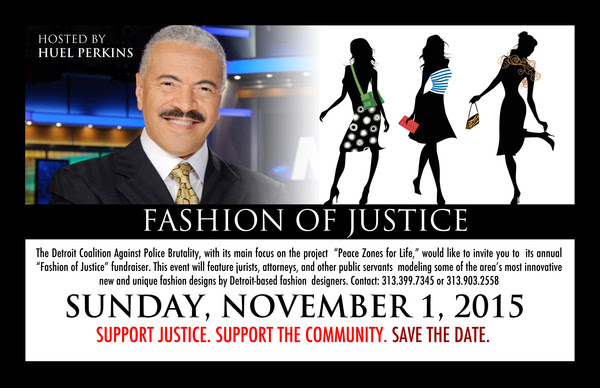
|
||||||
| Grace Lee Boggs 1915-2015 Dear Friends of Grace Lee Boggs,
We want to thank all of you who have joined us in celebrating the extraordinary life and legacy of Grace Lee Boggs. Your generosity, words, and encouragement were shared with Grace every day.We have been deeply moved by the tremendous outpouring of love, reflection and honor for Grace. We are sharing a few of the pieces that we think have captured not only Grace’s life, but the challenges she continues to raise for us as we seek a new America.
We are planning a memorial in Detroit on October 31 at 11:00 at the IBEW. Details are below.
|
||||||
|
To the Boggs Center and family, I was very saddened to learn about the death of Grace Lee Boggs, and wanted to share with you how much Grace meant to us: Grace was not only a legend and a symbol of something – her reflections and writings were some of the most wise and grounded advice I ever received as a community activist. The idea for [R]Evolution, the idea that it is not enough to tear down a bad system but that we have to be ready and able to build a better one, changed the way I work in Haiti. Instead of spending all of my energy fighting against the powers that be, I am trying to grow power in my community so that we can fight together. I am working to find and build leaders who don’t just show up for protests, but who will be ready to do the hard, day-to-day work of building a better system. Grace’s ideas helped me to see my role in the struggle in a new way, and if I am still here today fighting, I can say that is in part thanks to the wisdom of Grace Lee Boggs. Grace and Jimmy also meant something important to my wife Sabina and I, as we found a lot of inspiration in their story: I am a young Haitian community leader coming from one of the most marginalized parts of the country – I worked in factories growing up, and led social movements in my community. My wife is an American who moved to Haiti after the earthquake, and had to learn how to support the struggles in my community without disrupting or co-opting them. When we learned about the story of Grace and Jimmy, we identified with so many of their struggles, their victories, and their challenges. Both Sabina and I enrolled in an alternative program for community development leaders (called the Future Generations Graduate School), and spent a week in Detroit to learn about social change. We studied Grace and Jimmy’s writings beforehand, were hosted by the Boggs Center, and had the honor of meeting Grace one afternoon. It was in many ways like meeting a legend, but it was also like seeing an old friend. We felt very connected to Grace by the nature of our struggles, even though they took place thousands of miles apart. And now that she is gone, we have to recognize that she planted seeds of change in all of us, and it is up to us to nurture them so that the revolution she imagined can continue to grow. I want you all to know that in Haiti, Sabina and I will do everything we can to honor Grace’s life and her message – we have already planted a tree in her name, and will keep fighting for [r]evolution. Louino (Robi) ROBILLARD, “Activism can be the journey rather than the arrival.” – Grace Lee Boggs The (R)evolutionary Vision and Contagious Optimism of Grace Lee Boggs Grace Lee Boggs died yesterday at the age of 100 and the world is better for the century that she walked it with us. As a writer, insurgent intellectual, revolutionary organizer, mentor, community builder and friend to many, Grace will be dearly missed.When I was a teenager in Detroit and a wannabe revolutionary in the 1970s I heard the names Grace and Jimmy Boggs all the time. I knew they were beloved and respected in Detroit’s Black activist community, and I just assumed they were both Black. I was surprised to finally meet Grace and discover she was Chinese-American. I had to recalibrate my notions about the Black struggle, “my people” and race itself.
Long after many of Detroit’s young black revolutionaries left Detroit and the revolution, Grace stayed. She was so immersed in the life and struggles of Detroit’s predominately Black communities that she said her FBI file described her as “probably Afro-Chinese.” Alongside her partner in life and politics, former auto-worker and black activist and leader, Jimmy Boggs (who died in 1993), Grace fought the good fight over five decades, writing books, building organizations, organizing campaigns, and teaching by example that “revolution” is a protracted process-not a single event or a spate of protests. She saw the Black struggle as the cutting-edge struggle of her lifetime, intricately linked to many others, and she was humbled to be a part of it. Grace was also a catalyst for bringing people together. The Boggs Center, which she founded, was a creative space for artists, the young participants in the now-famous “Detroit Summer” projects and various fans and visitors who migrated there to pay their respects to Grace. Those visitors included celebrities and scholars from the late Ruby Dee and Ossie Davis, to Danny Glover, historian Robin D.G. Kelley, and Chicago activists Bill Ayers and Bernardine Dohrn. But there were also lesser-known filmmakers, hip-hop artists, labor organizers, students and politicians that showed up at Grace’s door over the decades, drawn by the power of her reputation and her track record for getting things done. Her beloved chosen family in Detroit included her longtime friend and comrade, Shea Howell, whose devotion to Grace was unmatched; Rich Feldman; former Black Panther and organizer, Ron Scott; the activist and artist, Ill; dream hampton; the poet and tireless organizer Tawana Petty and many more surrounded her with so much love and nurturing support that I am sure she never felt alone. Many people will remember Grace as gentle, kind and generous. She was all those things. But I want her to also be remembered as a rigorous intellectual and a fierce thinker and analyst. She took ideas seriously. She wrote or co-wrote numerous books, articles and position papers; she lectured and talked about complex theories of culture, community and change. She was trained as a philosopher. As a Marxist, she worked alongside the brilliant Trinidadian intellectual C.L.R. James in various Trotskyist organizations before eventually splitting, as so many such groups did and still do, over ideological differences. Most importantly, she was not a part of an elite intelligentsia. She lived in a modest little house on an even more modest income. She never held a tenured university job. She believed that ordinary people, not academics, had the power to understand their lives and to change the world with that understanding. Jimmy Boggs was her intellectual hero. She once wrote of her time working with C.L.R. James, “Whether or not you were an intellectual, you felt that when you participated in a demonstration or asked probing questions about life or society, you were helping to create important ideas.” This was the root of her radical epistemology, borrowed from Boggs and James and Antonio Gramsci. During her century of life, love and work, Grace lived what she believed and served as an example and inspiration for many of us. Even when you did not always agree with her, you had to love her. She always had that beautiful smile on her face and you knew that her love for humanity was so strong and deep that it was a generative force for creating change. She often wore a t-shirt that read “(r)evolution.” It suggested that we are all evolving as people as we fight, build and envision revolution. Grace was a visionary and a doer. She could look at a trash-strewn field and imagine a garden. And then, she would work to transform it. She could look at Detroit’s broken down buildings and imagine new possibilities. And she could look at all of us, her friends, comrades and fellow travelers of various stripes, flawed and fragmented, and she could imagine us as a whole. She could meet a scruffy little kid with no skills, no hope and no place to go, and imagine that he or she would become a poet, a revolutionary or brilliant scientist. This was the lens through which Grace saw the world and her optimism was contagious. In 2010 at the U.S. Social Forum in Detroit, a gathering of thousands of progressives from around the country, Grace was center stage in a plenary conversation with Immanuel Wallerstein. At 95, she was sharp, lucid and on point. She would often joke and say, “I’ve lost some of my hearing and a little bit of a lot of other things, but I still have all my marbles.” She certainly did. Grace Lee Boggs made every year and every moment count. The best tribute we can pay to our dear Grace is to “grow our souls,” as she once wrote, and keep her optimistic and generous spirit close to our hearts in all the work we do and in all the battles we fight. Barbara Ransby [Barbara Ransby is a professor of history at the University of Illinois-Chicago, the author of Ella Baker and the Black Freedom Movement: A Radical Democratic Vision and a founder of the activist group Ella’s Daughters.] [Reprinted with permission from In These Times. All rights reserved.] Remembering Grace Lee Boggs and her role in the black freedom struggle
|
||||||
|
||||||
|
||||||





